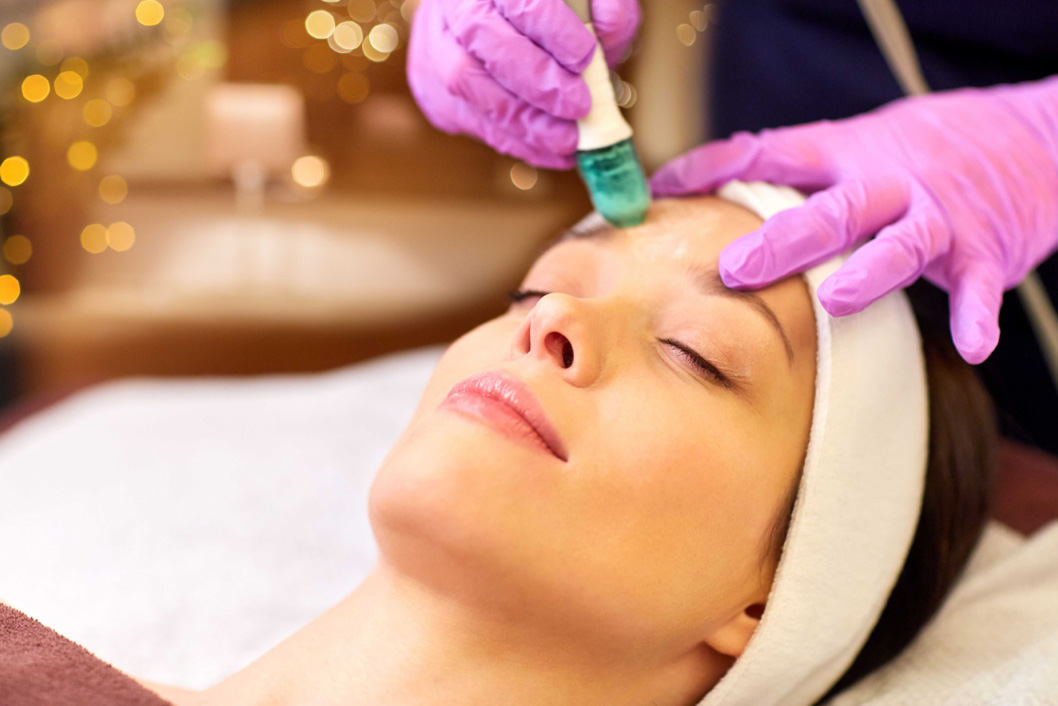Dermaplaning

What is dermaplaning?
Dermaplaning—also known as microplaning—is a cosmetic treatment that reduces the appearance of skin blemishes and removes unwanted hair. During this procedure, your provider will use a scalpel called a dermatome to scrape off the top layer of dead skin. This reveals new skin, free from damage and imperfections.
Typically used as a facial treatment, dermaplaning is an effective way to exfoliate your skin and remove vellus hair (“peach fuzz”). Though it doesn’t stop the aging process, microplaning can make your skin look younger.
If you want to learn more about dermaplaning treatments–or schedule a consultation with a dermaplaning provider–then contact The Med Spa.
St. Luke’s dermaplaning providers are among the Lehigh Valley’s most skilled and experienced. Our specialists are all licensed healthcare practitioners, having completed extensive training that leads to a rigorous certification process. And due to our large network of 16 hospital sites, we have access to the latest technology. These resources allow us to perform effective treatments with results you can be proud of.
Overview
Dermaplaning is for adults with all skin types—including those with sensitive skin or rosacea. Some of the most common skin conditions addressed include the following:
- Actinic keratosis (scaly skin patches that can lead to skin cancer)
- Acne scars
- Skin damage (especially from sun exposure)
- Peach fuzz
- Fine lines
- Dry skin
- Dull skin
- Wrinkles
By removing damaged skin, microplaning makes your skin smooth and radiant. To determine if dermaplaning is right for you, schedule a consultation with a St. Luke’s provider.
Getting dermaplaning can positively impact your wellbeing and self-confidence. The following list includes some of the most commonly reported benefits:
- Rejuvenated skin
- Fewer fine lines and wrinkles
- Easier makeup application
- Smoother skin
- Smaller pores
- Less-noticeable acne scars
- Quicker hair removal
Microplaning is a natural hair-removal treatment that doesn’t use chemicals that irritate your skin—giving you smooth skin without irritation afterwards. Having dermaplaning is a non-surgical way to give you a more youthful appearance.
As with all cosmetic procedures, dermaplaning has risks. Some of them include the following:
- Irritation
- Redness
- Dryness
Your provider will review a complete list of risks before getting your consent.
Before the procedure
Although there is no significant preparation, there are several simple ways to get your skin ready for dermaplaning at St. Luke’s Plastic & Reconstructive Surgery. Some of them include the following:
- Avoid skin exposure
- Stay hydrated
- Avoid tanning creams
- Stop using exfoliants and masks (three days before)
On the day of your procedure, ensure you show up early to fill out paperwork–and bring any current skincare products you use.
During the procedure
Your provider will work with you to determine the best approach to achieve your desired results. They may use numbing spray before your procedure, though dermaplaning doesn’t require general anesthesia.
Using a dermatone–which looks like an electric razor with a small blade–your provider will remove excess hair and dead skin cells. Though the procedure isn’t painful, you may feel a scratching or stinging sensation.
The length of dermaplaning depends on the size of your target area.